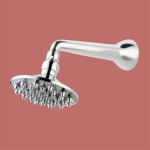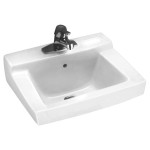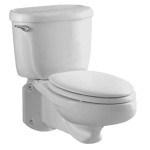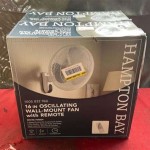Garage Exhaust Fans: Wall Mounted Solutions for Improved Air Quality
Garages, often relegated to storage and workspaces, can accumulate harmful fumes and pollutants. These contaminants, stemming from vehicle exhaust, chemical storage, and various workshop activities, pose significant health risks and can degrade the overall air quality within and around a property. Consequently, implementing an effective ventilation system is crucial for mitigating these hazards. Wall-mounted garage exhaust fans offer a practical and space-saving solution for removing these pollutants and maintaining a healthier environment.
This article explores the benefits, selection criteria, installation considerations, and maintenance aspects of wall-mounted garage exhaust fans, providing a comprehensive guide for homeowners and professionals seeking to improve garage air quality. The information presented aims to empower readers to make informed decisions when selecting and implementing a suitable exhaust fan solution.
Understanding the Importance of Garage Ventilation
Garages are frequently used for activities that generate harmful byproducts. Vehicles, when running, emit carbon monoxide, a colorless and odorless gas that can be fatal in high concentrations. Gasoline, paints, solvents, and other chemicals stored in garages release volatile organic compounds (VOCs) that contribute to indoor air pollution and potential health problems. Welding, grinding, and spray painting generate particulate matter that can irritate the respiratory system. Without proper ventilation, these pollutants can accumulate, posing a risk to occupants, particularly those who spend considerable time in the garage or adjacent living spaces.
Beyond health concerns, inadequate ventilation can lead to moisture build-up. This moisture can promote mold growth, which can damage stored items and further compromise air quality. Rust and corrosion can also occur, damaging vehicles, tools, and other metal objects stored within the garage. A well-ventilated garage helps regulate humidity levels, preventing these issues and preserving the integrity of stored items.
Proper ventilation also indirectly benefits the home's heating and cooling efficiency. A garage that is excessively hot or cold can impact the temperature of adjacent rooms, increasing energy consumption. An exhaust fan can help regulate the garage temperature, reducing the thermal load on the home's HVAC system.
Key Considerations for Selecting a Wall-Mounted Garage Exhaust Fan
Choosing the appropriate wall-mounted garage exhaust fan requires careful consideration of several factors. The size of the garage, the frequency of pollutant-generating activities, and the desired air exchange rate are all critical determinants in selecting the optimal fan.
Airflow Capacity (CFM): The airflow capacity, measured in cubic feet per minute (CFM), indicates the volume of air the fan can move. A larger garage requires a fan with a higher CFM rating to effectively remove pollutants. A general rule of thumb is to calculate the garage's volume (length x width x height) and then choose a fan that can exchange the air in the garage multiple times per hour. Online calculators and guidelines provided by fan manufacturers can assist in determining the appropriate CFM for a specific garage size.
Fan Type: Axial fans and centrifugal fans are the two primary types of exhaust fans. Axial fans are generally less expensive and suitable for smaller garages with moderate ventilation needs. Centrifugal fans, also known as blower fans, are more powerful and efficient, making them suitable for larger garages or those with significant pollutant loads. Centrifugal fans also tend to be quieter than axial fans at similar airflow rates.
Noise Level: The noise level of the fan, measured in decibels (dB), is an important consideration, especially for garages located near living areas. Lower dB ratings indicate quieter operation. Reviewing product specifications and customer reviews can provide insights into the noise levels of different fan models.
Power Source: Most wall-mounted garage exhaust fans operate on standard 120V AC power. However, some larger and more powerful models may require 240V AC power, necessitating professional electrical installation. Ensure that the garage's electrical system is adequate to handle the fan's power requirements.
Features: Several features can enhance the functionality and convenience of a garage exhaust fan. These include adjustable speed settings, automatic shut-off timers, and built-in thermostats. Some fans also incorporate backdraft dampers to prevent outside air from entering the garage when the fan is not in operation. Look for fans that are Energy Star certified, indicating that they meet energy efficiency standards.
Materials and Construction: The fan's materials and construction quality directly impact its durability and resistance to corrosion. Look for fans with housings made from durable materials such as galvanized steel or powder-coated aluminum. Corrosion-resistant blades and motors ensure long-term performance in the harsh garage environment.
Installation and Maintenance of Wall-Mounted Garage Exhaust Fans
Proper installation and regular maintenance are essential for maximizing the performance and lifespan of a wall-mounted garage exhaust fan. Incorrect installation can compromise the fan's efficiency and safety, while neglecting maintenance can lead to premature failure.
Installation Location: The optimal installation location for a garage exhaust fan is on an exterior wall, high enough to effectively remove rising pollutants and fumes. Ideally, the fan should be positioned opposite or as far as possible from the main source of pollutants, such as the garage door or vehicle parking area. Avoid installing the fan near flammable materials or obstructions that could impede airflow.
DIY vs. Professional Installation: Depending on the individual's skill level and the complexity of the installation, a wall-mounted garage exhaust fan can be installed either as a DIY project or by a qualified professional. If the installation involves electrical wiring or structural modifications, it is generally recommended to hire a licensed electrician or contractor. Professional installation ensures that the fan is properly wired, securely mounted, and meets all applicable building codes.
Installation Process: The typical installation process involves cutting a hole in the exterior wall to accommodate the fan housing, securing the fan to the wall using mounting brackets or screws, and connecting the fan to the electrical power source. Ensure that all wiring connections are properly insulated and that the fan is securely grounded. Install a weatherproof vent cover on the exterior of the wall to protect the fan from the elements and prevent insects or debris from entering the garage.
Maintenance Procedures: Regular maintenance is crucial for maintaining the fan's performance and preventing costly repairs. The frequency of maintenance depends on the fan's usage and the surrounding environment. However, a general guideline is to clean the fan blades and housing at least once per year. Dust and debris can accumulate on the blades, reducing airflow and increasing noise levels. Use a soft brush or vacuum cleaner to remove dust and debris. Inspect the fan motor for signs of wear or damage. Lubricate the motor bearings if necessary, following the manufacturer's recommendations.
Troubleshooting Common Issues: Several common issues can arise with wall-mounted garage exhaust fans. These include reduced airflow, excessive noise, and motor failure. Reduced airflow can be caused by clogged blades or a blocked vent. Clean the blades and vent to restore airflow. Excessive noise can be caused by loose mounting screws, damaged blades, or a worn-out motor. Tighten the mounting screws, replace damaged blades, or replace the motor if necessary. Motor failure can be caused by overheating, electrical problems, or lack of lubrication. Check the motor for proper voltage and wiring connections. Lubricate the motor bearings or replace the motor if necessary.
Choosing the right wall-mounted garage exhaust fan and ensuring its proper installation and maintenance are crucial steps in creating a healthier and safer garage environment. By understanding the factors discussed in this article, individuals can effectively mitigate the risks associated with poor garage air quality and protect their health and property.

Vevor Shutter Exhaust Fan 14 In 1513 Cfm 10 Speed Adjustable Wall Mount Attic Ventilation And Cooling For Greenhouses Bycspqsdjec14y5nav1 The Home

24 Inch Garage Exhaust Fan With Butterfly Shutter

24 Inch Garage Exhaust Fan With Butterfly Shutter

Iliving Variable Speed Shutter Exhaust Fan 14 In Indoor Silver Wall Mounted Ilg8sf14v T At Com

Vevor 24 In Shutter Exhaust Fan High Speed 3320 Cfm Aluminum Wall Mount Attic With Ventilation And Cooling

Garage Exhaust Fan How To Install And Is It Worth

Iliving Variable Speed Shutter Exhaust Fan 12 In Indoor Silver Wall Mounted Ilg8sf12v T At Com

10 12 14 16 20 Wall Mounted Shutter Exhaust Fan Aluminum High Speed Garage

Broan Nutone 200 Cfm Through Wall Utility Exhaust Fan For Garage Kitchen Laundry And Rec Rooms 509 The Home

24 Shutter Exhaust Fan 4100 Cfm Speed Wall Mount Garage Warehouse








